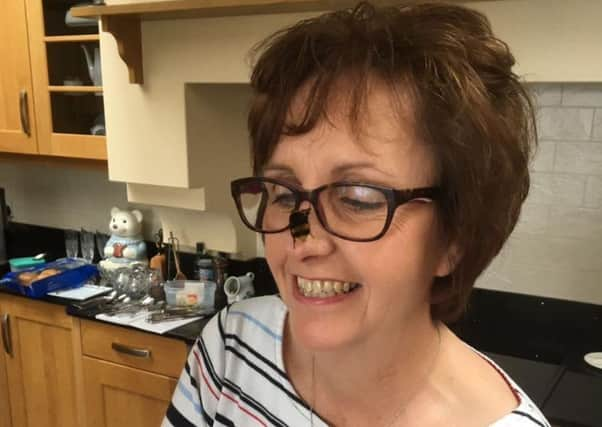Ilona Amos: Bee that befriended human shows insects may have feelings


It revolves around Fiona Presly, a library assistant from the Highlands, whose life was profoundly changed after she literally stumbled over a stricken buff-tailed bumblebee in her garden. A self-confessed lover of wildlife, she bent down to move it out of harm’s way – despite its crown as Europe’s largest stinging insect. It was then she discovered the bedraggled-looking queen had no wings.
Realising the insect would likely die if left to fend for itself, she embarked on a mission to care for it, creating a special garden where it could be safe and bringing fresh flowers for it to feed on. That was last April.
Advertisement
Hide AdAdvertisement
Hide AdWhat’s truly remarkable is what happened next. The two developed what Mrs Presly believes was a relationship over the next five months – until Bee, as she was named, died of old age. Bee responded to Mrs Presly’s presence and would come out of the nest when she tapped or scratched nearby, climbing on to her hand and even her face. She seemed to enjoy “cuddles” and never did her business on her human companion.
Lucky for us, Mrs Presly documented in wonderful detail the course of Bee’s short life – which was longer than usual for her species in the wild. She described Bee seeming “down” after being left alone for a few hours, and visibly brightening at the sight of her ‘owner’.
It might be easy to dismiss her experiences as evidence of anthropomorphism, which is something we’re apparently predisposed to. However, this flightless bee did not only ‘perform’ only when she was hungry. Often she just seemed to want to hang out and “snuggle” in Mrs Presly’s hand, apparently appreciating the companionship – though she was reluctant to do the same with strangers.
Few would question the ability of our pet dogs and cats to love us back. But a bee, really? Even the experts are divided, despite proof that some wasps can recognise individuals in their colony and bees can learn how to use simple tools. The story of this crippled bumblebee has thrown open new debate among experts in the field. Bee psychologist Lars Chittka suggest the idea may not be as fanciful as it sounds. After all, we have no problem accepting insects are capable of aggression – swarms of angry wasps, for instance. So can we really say invertebrates cannot ‘feel’ affection or contentment? He says Mrs Presly’s unwitting study could form the basis of new research into the subject.
I probably won’t be sharing my pillow with a six-legged friend any time soon – at least not on purpose – but I think Mrs Presly’s story shows we can all be more connected to nature and the creatures we live alongside if we abandon some of our preconceptions.
Meanwhile, there’s a chance to get involved in a bit of citizen science over the next few weeks. But don’t worry, you don’t have to go out and tame your own hornet. The People’s Trust for Endangered Species is calling for volunteers across the UK to survey a garden or local green space once a week between 26 March and 24 June and record any wild mammals seen there. The charity is particularly keen for Scots to get involved as the fewest counts took place north of the border last year. As well as helping science, it’s a great chance to look out for some of the nation’s rarest and best-loved mammals. Who doesn’t want to see red squirrels, bats, pine martens, badgers, hares and hedgehogs?